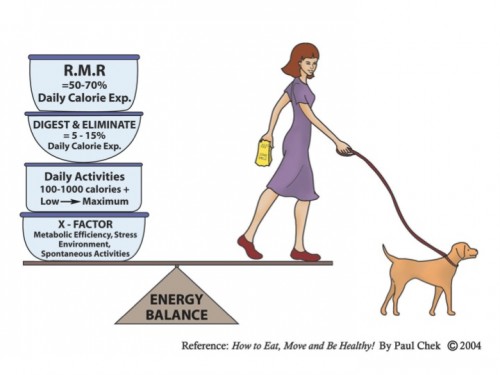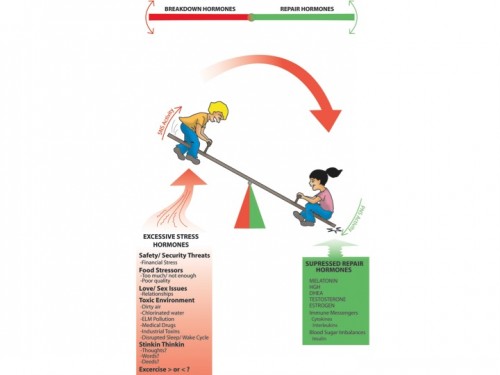ADDRESSING EXCESS AND DEFICIENCY AS A SOURCE OF FATIGUE, ILLNESS AND DISEASE
Happy Wednesday to You!
My day flew by like an arrow out of a hunter’s bow yesterday!
Once we arrived home from Palm Desert, I was hot on yesterday’s blog.
Then right to work on new slide shows for upcoming presentations, coaching calls, and the rest!
I snuck in a quick pushing circuit of heavy Swiss ball dumbbell bench presses (95 x 4-6), alternate cable pushes for 12 reps each (105 x 12 ea.), followed by clubbell touchbacks (20 ea. X 12), x 4 circuits.
Just what the doctor ordered. I felt a bit flat from all the business and travel, but just adjusted my output to what felt therapeutic. Easy done!
When I got home in the evening, Rory and I relaxed a while.
I worked on finishing a drawing I was inspired to create after looking at a photo of “Flying Pipe”, Yankton Sioux Indian (1867).
His photo came with an order of herbs from a supplier and I was immediately intrigued by it.
I sat with it and went into emptiness and the image of him that appeared in my third eye (inner-vision) is what I drew below.
The second photo shows Flying Pipe next to my drawing so you can see the photo that inspired the drawing. My drawing shows his energy body; the bird represents his soul.
ADDRESSING EXCESS AND DEFICIENCY AS A SOURCE OF FATIGUE, ILLNESS AND DISEASE
It is safe to say that MOST chronic diseases and ailments are the direct result of dietary excess, and/or deficiency.
Eating too much foodstuffs overloads the digestive and eliminative organs and systems of the body, and results in inefficient breakdown and metabolism of foods.
The result is a combination of the following:
– Fatigue
– Lethargy
– Cravings for high energy (quick energy) foods and drinks, often processed!
– Mental cloudiness
– Poor recovery from activities of daily living and exercise
– Overburdening the detoxification pathways and increasing the likelihood of fungal and parasite infections
– Decreased skin, muscle and joint tissue quality
– Loss of sexual performance
– Loss of motivation
– Cravings
– Decreased sleep quality
– Constipation (which can be followed by loose stools as a last-ditch attempt to decrease toxic burden)
– Changes in hair, teeth, gums, finger and toenails that indicate nutritional depletion!
– Psychological imbalances
Eating too little (or suffering poor absorption) typically results in any combination of the following symptoms:
– Malnutrition! Almost every chronic symptom and ailment you can imagine!
– Cravings and addictions
– Psychological imbalances
– Many of the same symptoms related to overconsumption!

Resting Metabolic Rate (R.M.R): The diagram above is taken from my book How To Eat, Move and Be Healthy! (p. 210).
Please take careful note of the top two bowls and the information they provide.
The first essential point to understand here is that research shows that 50-70% of your daily caloric expenditure (if you are eating enough to begin with) is directly invested in the costs of maintaining yourR.M.R.
Just to be clear here, your R.M.R. defines the basal state of energy consumption/production needed to keep you alive!to keep the “lights on” so-to-speak.
DIGEST & ELIMINATE: Next, we see that the daily caloric expenditure of running the digestive and eliminative systems of the body equates to 5-15% of daily caloric expenditure.
Before we go into the other relevant areas of caloric expenditure, it is important to fully grasp the obvious, and the elusive facts being presented here.
The Obvious: The obvious fact that is a shocker to most people is that as much as 85% of your daily caloric intake is consumed before you consider any extraneous activities, such as walking your dog!
Therefore, any dieting that reduces caloric intake below that which is essential for maintaining all basal functions, is a major stressor to the body-mind construct.
The paradoxical result is that the body responds by elevating stress hormone levels. Elevated stress hormone levels triggers a holding response in the body-mind.
The body begins to hold water, hold calories as energy that it stores in fat, all of which tend to “increase weight and/or body size” instead of what was hoped for (usually out of ignorance of how the body actually works!).
If the body does indeed reduce it’s size under such circumstances, it is typically a stress response and comes at the expense of energy and resources being diverted away from essential life-support systems, such as hormonal function and production, thermo-regulation, musculoskeletal repair, and of course, digestion and elimination!
This is one of the primary reasons you see people diet, thin, gain it back, usually with additional gain, and the cycle typically repeats itself getting harder and more complex with each round.
The Illusive: What isn’t so obvious, even among the health and exercise professionals is that caloric consumption and utilization go hand-in-hand with nutrient utilization.
People today have a very dangerous tendency to see and perceive food as fuel; they think that food acts as an energy source in their bodies just the way gasoline acts as an energy source to run the engine of their car.
That mentality results in shopping for the best deals on food the way you’d choose the gas station with the lowest price fuel that will work for your car.
But we are not machines!
If the calories you bring in do not meet and exceed the nutrient cost of processing the calories in the cycle of digestion, metabolism, assimilation and elimination, you become progressively malnourished!
The result is a barrage of often confusing symptoms that lead doctors to prescribe a wide variety of dangerous drugs to address the symptoms of an eating disorder.
The drugs radically increase the stress on the body while decreasing the efficiency of some or all body systems, worsening the overall problem, even though there may be what appear to be temporary gains in the form of symptom reduction!
In general, research shows that the average person needs between 2300 and 2600 calories daily (depending on sex and body size) to meet essential needs.
If they are not met, one is technically considered to be starving. If the calories consumed are nutritionally empty calories, you actually worsen the overall condition.
DAILY ACTIVITIES + THE X FACTOR: Next, we see that the average caloric cost of a person’s daily activities (above and beyond basal costs) ranges between 100 and 1,000 calories.
The “X Factor” is a concept put forth by nutritionist, John Berardi and it accounts for motor activities that can’t be calculated as a specific activity, but are energy/resource consumptive. These are things like tapping your foot or jiggling your keys or coins out of nervousness.
The reason this whole scenario is critical for everyone to understand is because many today are using calorie-counting devices to determine how much food they should eat.
Imagine someone getting on a stepper or rower for half an hour to be informed by their calorie counter that they’ve consumed 150 calories for their workout, and then eating an apple and a couple pieces of toast to keep their intake at or below what they’ve consumed!
Now you have the metabolic costs of the workout, plus basal costs, and you are not bringing in enough food nutrition to repair the biological systems, organs and cells involved in the process of life as a whole.
Though this may sound like a very amateur mistake, rest assured I’ve seen all sorts of people that should know better doing exactly that!
As you go deeper into such imbalances, your body sends signals to the brain in the form of cravings.
The cravings may be for spinach, water, real salt, fish, red meat, raw foods, etc!yet are often interpreted as the need for more soda, sugar, or other such quick energy foods.
Each step one takes into excess where they are eating more than they have the resources to process, they take yet another step into malnutrition and show all the signs typical of people dieting dangerously, or starving.
The difference is that if you are truly starving, you aren’t wasting valuable resources pushing non-foods through the body so you are actually better off than the person stuffing their face with fast foods and the likes.
In my diagram above, you can see that as stress rises (be it physical, emotional, or mental), stress hormones elevate.
As stress hormones elevate, the sympathetic (fight/flight) nervous system becomes progressively more dominant, spending huge amounts of energy to prepare you to fight or flight.
Because physical readiness is more essential than digestion, elimination or bodily repair in the face of any legitimate threat, the parasympathetic (digest, eliminate, growth and repair) nervous system is suppressed.
This leads to progressive slowing of all growth and repair functions in the body, including restoration of key hormone levels, such as growth hormone, testosterone, estrogens, DHEA and many others.
This very imbalance is the basis of most chronic disease processes.
In my many books, audios, articles, webinars, on line courses and correspondence courses, I clearly describe the essentials of keeping yourself healthy in body and mind so you can live fully.
It is very evident that eating too much food that is deficient in high quality, functional nutrients is the equal of starving yourself with the added stress of processing the junk and eliminating it.
Starving yourself and playing silly games with calorie counters is yet another way to torture yourself and diminish the quality of your life.
A simple example of this kind of self-sabotage is being vegan, vegetarian, a raw-foodist, or living any system that doesn’t meet and exceed both your caloric (energy) and nutritional needs.
If you’d like help and are too tired to follow the simple 4-step plan in my book HTEM&BH!, I’d suggest you explore my multimedia eBook, The Last 4 Doctors You’ll Ever Need – How To Get Healthy Now!
The program has audio, video and slide shows to support learning in a whole-brain learning format and the information is easy to digest ☺.
There are also expansion audios for each of the 4 Doctor subject areas that expand on the teachings in the book, as well as exploring spiritual factors that are rarely ever considered by even t he most astute of nutritionists and healthcare providers.
I hope this little review on issues of over and under-consumption of essential nutrients in the form of food is helpful to you.
This afternoon from 3-4:30pm pdt I’ll be delivering “How To Work-In” Webinar through the C.H.E.K Institute.
For those of you who are interested in joining us for important information, you may register here: https://www.chekinstitute.com/webinar/
Enjoy your day!
Love and chi,
Paul Chek

















Find me on the web